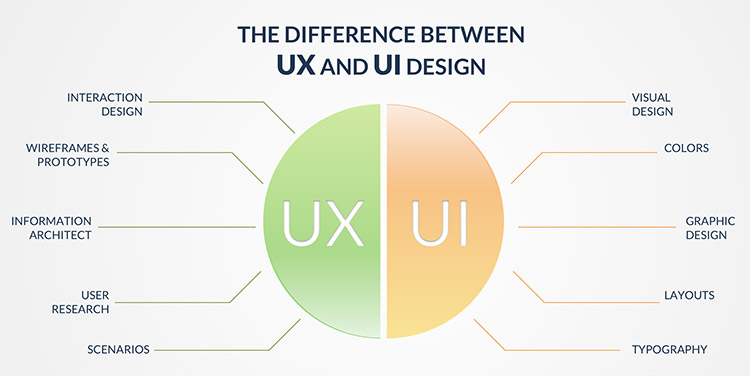What’s The Difference Between UX And UI?
UI and UX design are two of the most often confused and conflated terms in web and app design.
Tonic3 develops and executes strategies that drive profit through Digital Transformation. Practically that means we are built to help clients hone the right strategy, implement the right technology, and build the right long-term capabilities to deliver lasting transformation.
Industries
We believe that effective technology helps people succeed in their daily lives. So we help our clients engineer useful technology for their clients, partners, and employees. That translates to every major industry, but over the years we’ve developed several core areas of expertise.

Design thinking is an iterative, non-linear process that teams use to understand users, question assumptions, redefine problems, and develop innovative solutions for prototyping and testing.
With five phases: empathy, definition, development, prototype and testing, it is very useful for dealing with ill-defined or unknown problems.
Need Design Thinking for your company? Let us help you and show you how you can implement UX Design for your business!
In designing the user experience (UX), it is important to develop and refine the skills to understand and manage rapid changes in user environments and behavior.
The world has become more and more interconnected and complex since the cognitive scientist and Nobel Prize winner Herbert A. Simon mentioned it in his book The Sciences of the Artificial Design Thinking in 1969 and then contributed many ideas to get you started.

Professionals from a variety of backgrounds including architecture and engineering have advanced in this highly creative process to meet the human needs of modern times.
21st century companies in a wide variety of industries find Design Thinking to be a valuable tool for problem solving for the users of their products and services.
Of all design processes, design thinking is almost certainly the best way to think outside the box. It enables teams to better conduct UX research, prototyping, and usability testing to discover new ways to meet user needs.
Design Thinking's position as a driving force in the global economy (global heavyweights like Google, Apple and Airbnb have made remarkable use of it) matches its status as a subject at leading universities.
With Design Thinking, teams have the freedom to generate innovative solutions. This allows your team to protect hard-to-access information and use a variety of practical methods to find innovative answers.
The Hasso Plattner Design Institute in Stanford (also known as d.school) describes Design Thinking as a five-step process.
Note: These phases are not always sequential, and teams often run them in parallel, out of order, and repeat them iteratively.
This is where you need to gain an empathic understanding of the problem you want to solve, usually through user research.
Empathy is vital to a human-centered design process like Design Thinking because you put aside your own assumptions about the world and gain real insight into your users and their needs.
It is time to gather the information gathered during the empathy phase.
Then you analyze your observations and synthesize them to define the fundamental problems that you and your team have identified.
These definitions are called problem statements. You can create people to focus on people before brainstorming.
Now you are ready to start thinking.
The solid knowledge base of the first two phases enables you to think outside the box, explore other ways of solving problems, and find innovative solutions to the problem you are creating.
Brainstorming is particularly helpful here.
This is an experimental phase. The aim is to find the best possible solution for every problem that occurs.
Your team should create inexpensive, scaled-down versions of the product (or certain product features) to explore the ideas you generated.
It could just be prototyping on paper.
Testers put prototypes to the test. While this is the final phase, design thinking is iterative: teams often use the results to redefine one or more additional problems.
Therefore, you can return to earlier stages for further iterations, changes, and refinements to find or remove workarounds.
In general, it is important to understand that these phases are different paths that contribute to the overall design project, rather than sequential steps.
Your goal at all times is to have the deepest knowledge of your users and your ideal solution / product.
Sometimes the easiest way to understand something intangible like design thinking is to understand what it isn't.
People naturally develop thought patterns based on repetitive activities and generally accessible knowledge.

They help us to quickly apply the same actions and knowledge in similar or familiar situations, but they also have the potential to prevent us from quickly and easily opening up new perspectives, ways of understanding and solving problems that have to be developed.
These thought patterns are often referred to as patterns, which are organized sets of information and relationships between things, actions, and thoughts that are stimulated and initiated in the human mind when we encounter environmental stimuli.
A single chart can contain a large amount of information.
For example, we have a preview for dogs that includes the presence of all fours, fur, sharp teeth, tails, paws, and a host of other notable traits.
Because these patterns are automatically stimulated, this can prevent a more accurate picture of the situation, or prevent us from seeing a problem in a way that enables a new problem-solving strategy.
Need Design Thinking for your company? Let us help you and show you how you can implement Design Thinking for your business!
Different groups of people from different departments are often involved in the design process; Because of this, it can be difficult to develop, categorize, and organize ideas and solutions to problems.
One way to keep a design project under control and organize basic ideas is through the design thinking approach.
Tim Brown, CEO of the renowned innovation and design company IDEO, shows in his successful book Change by Design that Design Thinking is firmly on the creation of a 'holistic and empathic understanding of people, of human problems and that is ambiguous or inherent.
Subjective concepts relate to emotions, needs, motivations, and behaviors.
This is in contrast to a purely scientific approach, which is more about understanding and testing the needs and emotions of the user remotely, for example through quantitative research.
In conclusion, Design Thinking is essentially a problem-solving approach crystallized in design, which combines a holistic user-centered perspective with rational and analytical research with the aim of creating innovative solutions.
Need Design Thinking for your company? Let us help you and show you how you can implement UX Design for your business!

UI and UX design are two of the most often confused and conflated terms in web and app design.

Testing the user experience often scares business owners and marketers alike. It seems like a daunting task, especially when you have a lot of...

Today, many factors are involved when interacting with a customer via a website.